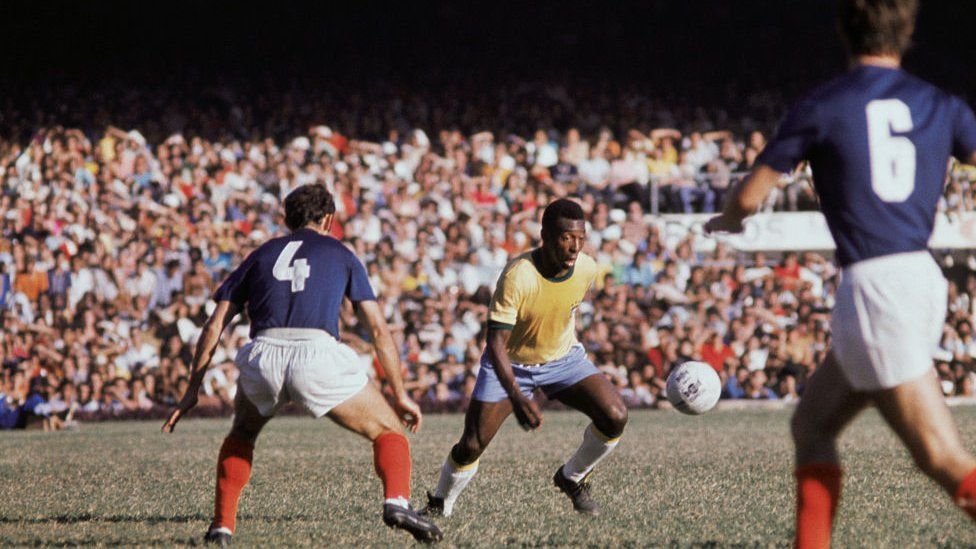
By Malu Cursino
BBC News
Pelé, o Rei, has died.
Brazil and the world are grieving, and many of us mourn an idol we never saw on the pitch.
Being 23 years old, I was not around during the start, middle, or even the end of his glowing football career. But that does not matter. Pelé was and always will be a household name.
Growing up in Rio de Janeiro, a city of exuberance and vibrancy, football played a crucial role in our life.
Maracanã, where Pelé scored his thousandth goal, was emblematic of my day-to-day routine until I moved to the UK, aged 11.
We were always nearby. The buzz and frenzy during match days could be felt across the city. Traffic would be slower, restaurants busier, and the streets much louder.
Following the news of king Pelé's death last night, as I was writing for the BBC's tributes live page, my family group chat kept buzzing.
Four generations, all devastated in equal measure by the death of an idol. Words, emojis and GIFs expressed our shock - we are Brazilian, after all, and emotions tend to run high.
But what stuck with me was a comment from my aunt. She highlighted that Brazilian media, while discussing Pelé's life, used the phrase: "Our king is black."
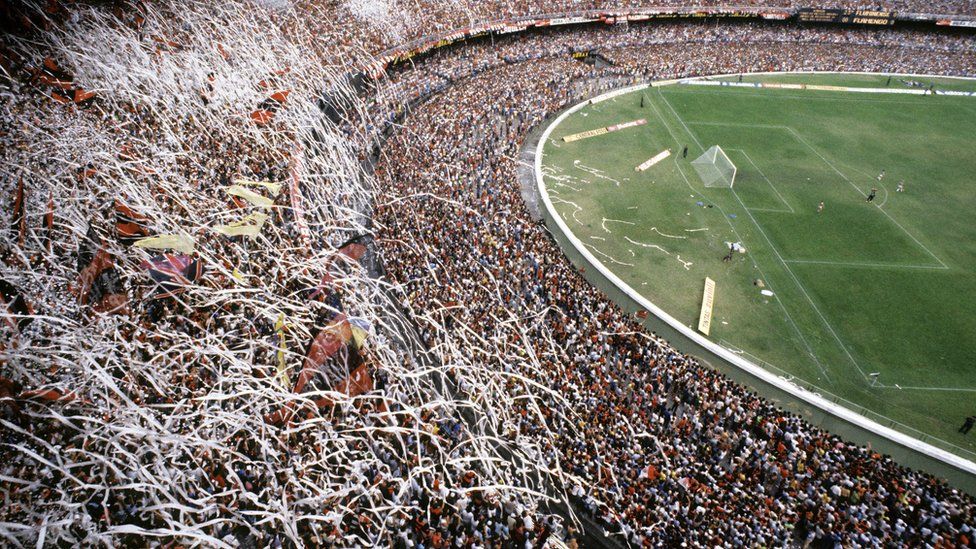
His stardom is unquestionable - and his influence worldwide says much more about him than his ethnicity and background.
But for Brazil's black community, hearing those words matter. A lot. And they signify a paradigm shift we have been going through for decades - one which Pelé played a crucial role in.
Because Pelé rose to the status of national treasure in a country with a deep history of slavery, and a legacy of division.
He regularly faced monkey chants on the pitch and had several racist nicknames. He once said that if he had stopped every game after a monkey taunt, he would have had to stop them all.
He was key to carving out space and recognition for black people in Brazilian football, his biographer Angelica Basthi has said - but he was never directly involved in the fight against racism.
Speaking to my mum, she tells me that Pelé "signifies greatness and contradiction".
Contradiction, because many Brazilians struggled with his resistance to speak out against racism.
Greatness, due to the path he forged for us, black Brazilians. Pelé rose to stardom despite Brazil's deeply rooted racism.
"He allowed us, black Brazilians, to see one of our own being acclaimed by the masses, considered a King, an icon for the whole country," my mum tells me.
"Pelé won his first World Cup only 70 years after slavery was abolished [in Brazil], in a country which continued, and continues, to treat black people as third-class citizens.
"He was an icon, who made us realise that it is possible to be a black man of international prominence."
Brazil abolished slavery in 1888. It is not ancient history for us, and anti-black racism continues to be rife.
Pelé's voice and gravitas could be heard in the commentary of big games long after the end of his career - particularly during World Cups.
"Even being quiet, he was able to contribute a lot towards Brazil's image worldwide," Edward Helal, my friend and a huge football fan, tells me.
Asked about the mood in Rio, Edward says most people are taking time to pay tributes and express their gratitude to the king of football.
Even now, during my annual visits back home, I dare not suggest having anything other than our world-renowned football commentary in the background on a Wednesday evening or Sunday afternoon.
I have Pelé to thank - and blame - for it.
By Ben Church, CNN
Published Sat December 31, 2022

Pelé joined the New York Cosmos in 1975 and played his last official game in 1977.Bettmann Archive/Getty Images
CNN —
He’d won three World Cups, scored goals galore and become a global icon, but Pelé wasn’t quite done yet, so off he went to the US and helped transform the sport of soccer in North America.
The Brazilian great was convinced to come out of retirement, signing in 1975 for the New York Cosmos for three more seasons.
Pelé had seemingly played his last professional game months prior to joining the North American Soccer League (NASL) side, hanging up his boots after making 638 appearances for his childhood club Santos.
It was almost unfathomable that Pelé would ever play for any other club apart from Santos, but he joined the Cosmos midway through the 1975 season on a $1.67-million-a-year contract, despite soccer struggling to generate much interest in North America at the time.
Pelé came, saw and conquered and by the time ‘O Rei’ (“The King”) left in 1977, he was an NASL champion who had helped spark a soccer boom.
“During three seasons with the Cosmos, Pelé helped transform the domestic landscape of the sport of soccer,” the Cosmos said in a statement after his death this week.
“Where once there had been baseball diamonds, now there were also soccer pitches.
“The Cosmos and their King not only started a sporting revolution in America, they also traveled the world to spread the Gospel of the Beautiful Game.”
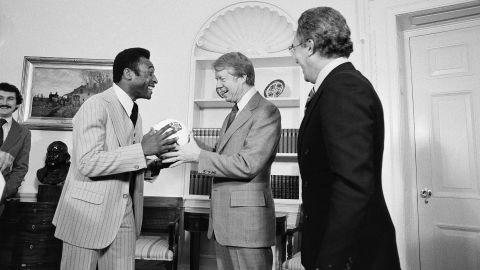
The Brazilian speaks to then US President Jimmy Carter at the White House in 1977.Peter Bregg/AP
Pelé paved the way
Even now, after almost 50 years, Pelé’s influence is still being felt across both the men’s and women’s games in North America.
His move to Cosmos paved the way for other greats, such as Giorgio Chinaglia and Franz Beckenbauer, to follow suit and although the NASL ultimately folded in 1984, it set a blueprint for Major League Soccer (MLS) when it was established in 1993.
Superstars such as David Beckham, Gareth Bale, Thierry Henry and Zlatan Ibrahimovic have all followed in the footsteps of Pelé by helping grow the sport in North America by playing in the MLS.
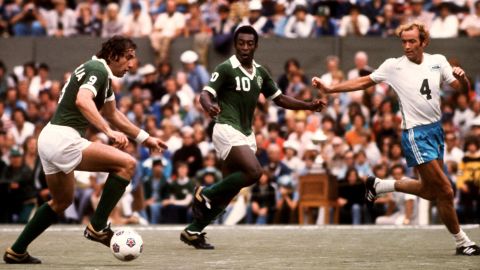
Pelé opened the door for more superstars to play in the US.Peter Robinson/EMPICS/PA Images/Getty Images
Soccer in the US is now thriving, with the US National Men’s Team impressing during the Qatar 2022 World Cup.
Scouts from across the world are now looking at North America to discover new talent, with the sport cemented into the fabric of society and being naturally passed down through generations.
Much of the early work was done in the 1970s thanks to Pelé’s natural ability and infectious smile.
CNN’s Don Riddell spoke with supporters about Pelé during Qatar 2022, with one American saying the legend changed his life.
“Watching him was the first professional game I ever saw in 1975 and because of that, one of the reasons this is my 11th World Cup,” Clifton Broumand told CNN.
“Watching him and his ability hooked me to coming and watching soccer and the World Cup.”
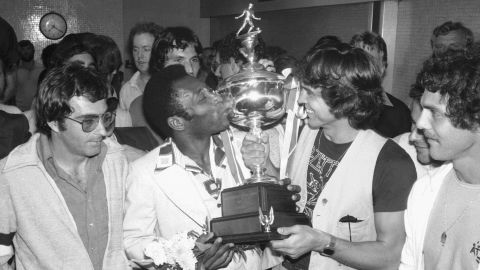
Pelé lifts the NACL trophy after winning the title in his last season in the US.AP
In the season before Pelé joined Santos in 1975, the Cosmos’ largest attendance for a match was a little over 8,000 people.
During his final and most successful season in 1977, the average crowd was 42,689 for home games, including three occasions when the attendance was over 70,000, according to the Society for American Soccer History.
When Pelé joined the Cosmos he was aged 34 and he went on to score a total of 37 goals in 64 NASL matches.
“Pelé’s decision to bring his artistry to the United States with the New York Cosmos in the 1970s was a transformative moment for the sport in this country,” MLS Commissioner Don Garber said in a statement.
“As Pelé captivated fans throughout the US and Canada, it demonstrated the power of the game and the limitless possibilities for the sport.”
Beacon of light
The Cosmos’ first General Manager Clive Toye played a key role in getting the sport’s then biggest superstar to join the Cosmos.
A former journalist who was heavily involved in the NASL’s creation, Toye had a vision for the future of soccer in the US and believed Pelé was the man to make that dream a reality.
However, Toye and the Cosmos faced some stiff opposition from around the world for Pelé’s signature.
Heavyweight political intervention was even brought to bear, with Pelé saying then US Secretary of State Henry Kissinger had helped convince him to join the Cosmos.
“At that time, I had a lot of proposals to play in England, Italy, Spain, Mexico but I said no. After 18 years, I want to rest because I’m going to retire,” Pelé told CNN in 2011.
“Then appeared the proposal to go to New York because they want to make soccer big in the United States. That was the reason. I started my mission.”

Pelé attracted new fans to the sport during his time in New York.Colorsport/Shutterstock
Suddenly it was cool to watch soccer.
Matches were broadcast globally and the star-studded Cosmos team was the hottest ticket in town. The Comsos and Pelé even began touring around the world.
“No matter where we went, all around the world, Asia, Australia, Europe, all they wanted was Pelé,” former Cosmos player Dennis Tueart, who was signed to replace Pelé, though he played some exhibition matches with the Brazilian star, told Sky Sports.
“He had extraordinary vision, extraordinary athleticism […] he was without doubt, in my view, the best.”
Pelé still has a presence in New York City today. The ‘Pelé Soccer’ store was opened in 2019 and sits on the iconic Times Square, a location many fans flocked to after news of his death.
After the Cosmos won the NASL title in 1977, a farewell match against Pelé’s former team Santos was organized, with the Brazilian playing a half for both sides in what would be his final official game.
After the testimonial, he addressed more than 70,000 people inside a packed New York’s Giants Stadium, leading the crowd in a chant of “Love, love, love.”
A fitting end, perhaps, for a man who spread joy wherever he went and who helped establish soccer as a way of life in North America.
RONALD BLUM
NEW YORK
THE ASSOCIATED PRESS
Clive Toye travelled to Jamaica and walked unannounced into the hotel where the Brazilian club Santos was staying ahead of a friendly against the Reggae Boyz in January, 1971. Pele was sitting by the pool, and the New York Cosmos general manager began the cold call that changed U.S. sports history.
“You could go to Juventus, you could go to Real Madrid, yeah, you could win a championship. But so will other people,” the 90-year-old Toye recalled telling Pele. “You come to us, you can win a country and nobody else could do that except you.”
Dozens of meetings over four years led to Pele agreeing to sign with Cosmos in June ,1975. His 2½ seasons in New York put U.S. soccer on a path to holding the World Cup in 1994 and launching Major League Soccer two years later.
“There are probably two athletes that have transcended their sport and transcended sport overall in our lifetime,” MLS commissioner Don Garber said Thursday night after Pele’s death at the age of 82. “One was Muhammad Ali and the other was Pele.”
The Cosmos averaged 3,578 fans in 1974 – a figure that nearly tripled to 10,450 the next year, with people lining the sides of the Triborough Bridge approach to watch games at Downing Stadum on Randalls Island.
In 1976, the Cosmos averaged 18,227 at Yankee Stadium and then 34,142 at Giants Stadium in New Jersey the following year for Pele’s final season. Boosted by the Pele buzz – along with players Franz Beckenbauer and Giorgio Chinaglia – the Cosmos averaged more than 40,000 the following two years before a tailspin saw the league fold after the 1984 season.
From that first meeting in Kingston, where Toye brought along U.S. Soccer Federation’s Kurt Lamm for support, Toye travelled to Brazil several times and finally persuaded Pele to agree during a meeting in Brussels. The formal offer came a few days later in Rome.
Pele signed the contract in Bermuda for tax reasons, what Toye recalls as a US$2.7-million, three-year deal, and the Brazilian was introduced during a news conference at 21, a hangout for New York’s movers and shakers.
When Pele had led Brazil to his third and final World Cup title in 1970, the primary way to watch the tournament with English-language commentary in the U.S. was on closed-circuit television in arenas like Madison Square Garden. Toye and North American Soccer League commissioner Phil Woosnam had the league purchase U.S. rights that year for US$15,000 but couldn’t find a TV network that would agree to broadcast.
“There were still people, you’d say to them soccer, and they’d say, ‘What’s soccer?’” Toye said, speaking from his home in Mount Pleasant, S.C. “And then we’d talk to people about the World Cup, and they would say, ‘Oh, what’s the World Cup?’ This last World Cup you couldn’t bloody switch on any channel without seeing something about it.”
Pele was 34 when he joined the Cosmos and scored 37 goals in 64 regular and postseason matches. He agreed to countless interviews and promotional appearances as part of a mission to make soccer mainstream.
“The Cosmos was the spark that lit the fire that has become a conflagration of soccer in our country,” said Alan Rothenberg, a former U.S. Soccer Federation president and the head organizer of the 1994 World Cup. He had vivid memories of leaving the Plaza Hotel with Pele and jaywalking through traffic to Central Park.
“Cabs came screeching to a halt. They started screaming ‘Pele! Pele!’ It was like the Red Sea parted,” Rothenberg said.
Pele played for Santos from 1956-74 and for Brazil from 1957-71, making his mark on a sport that had largely bypassed an American fanbase fixated on Major League Baseball, the NFL, NBA, college football and college basketball.
“The NASL set the stage for what soccer in America is today, both from a grassroots perspective but also at the professional level,” Garber said. “He came here and said: This sport matters. I’m going to make it bigger than anybody ever dreamed it could be. And all of us who are in the sport today, whether a lover of the game or a player or administrator, we would not be where we are today if it wasn’t for Pele deciding to come to the United States.”
Sunil Gulati, another past USSF president and a member of FIFA’s ruling Council, first met Pele when he got an autograph at Dillon Stadium in Hartford, Conn., where the Cosmos played the Connecticut Bicentennials.
About 30 years later, Gulati accompanied Columbia women’s All-American soccer player Sophie Reiser to a suite at Hofstra because she wanted an autograph.
“Pele, one more, please?” Gulati recounted. “He turned to me and smiled and said, ‘There’s always one more.’ It was absolutely fantastic. He did everything with a smile.”
Pelé will be buried in 14-floor 'super-cemetery' with a museum and waterfall after lying-in-state on football pitch
31 December 2022
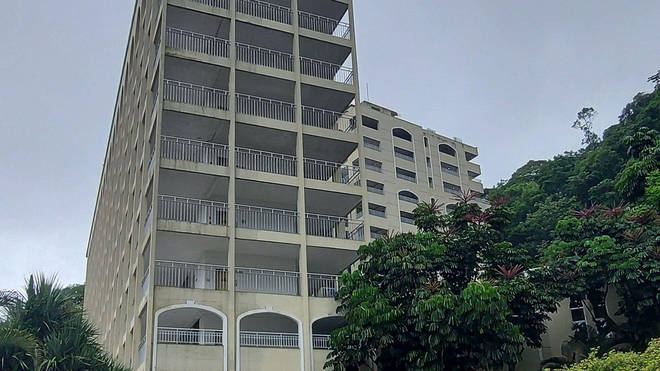
Pelé's coffin will occupy the ninth floor of a 14-storey super-cemetery after a burial parade that will stop outside his 100-year-old mother's house.
The three-time World Cup winner passed away on Thursday aged 82 after a long battle with bowel cancer.
Pelé will be housed in Ecumenical Necropolis Memorial, less than a kilometre away from home ground Vila Belmiro, where Pelé played almost his entire senior career for Sao Paulo state club Santos.
The memorial site is also home to a car museum, a waterfall and 14,000 high-security vaults.
Brazil's eminent football icon will lie-in-state in the centre circle of the Santos pitch for 24 hours, with thousands expected to visit the coffin.
It will then be paraded through the streets to Ecumenical Necropolis Memorial, stopping briefly at his bed-bound mother's home.
Read more:
Read more:
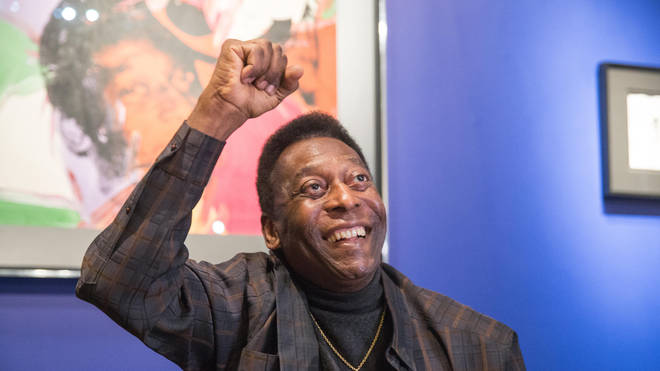
Pelé chose to occupy the ninth floor of the building in 2003, a nod to the shirt number his own father wore as a player.
Tens of thousands of Brazilians are expected to line the streets to see Pelé's coffin in what is likely to be one of the nation's biggest ever funerals.
The global superstar won three World Cups with the Brazilian national team between 1958 and 1970, and remains the only player ever to do so.
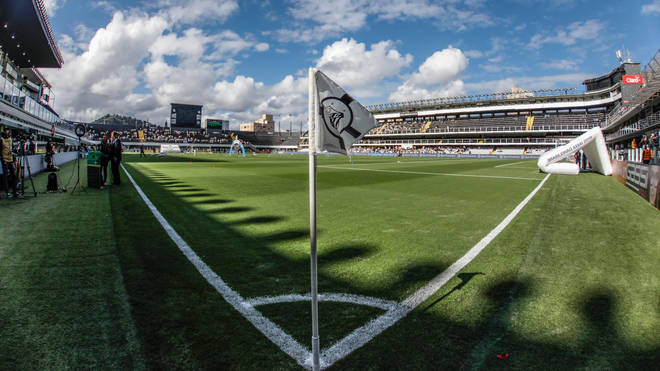
Pelé had been moved to end-of-life care at the Albert Einstein hospital in Sao Paolo after his body stopped responding to chemotherapy to treat bowel cancer.
His agent confirmed on Thursday that the iconic player had passed away.
Shortly after, Pelé's daughter Kely Nascimento, posted an heartbreaking final photo of him holding hands with family as he lay in hospital bed.
She wrote: "Everything we are is thanks to you.
"We love you infinitely. Rest in peace."
Pelé's life in 36 pictures

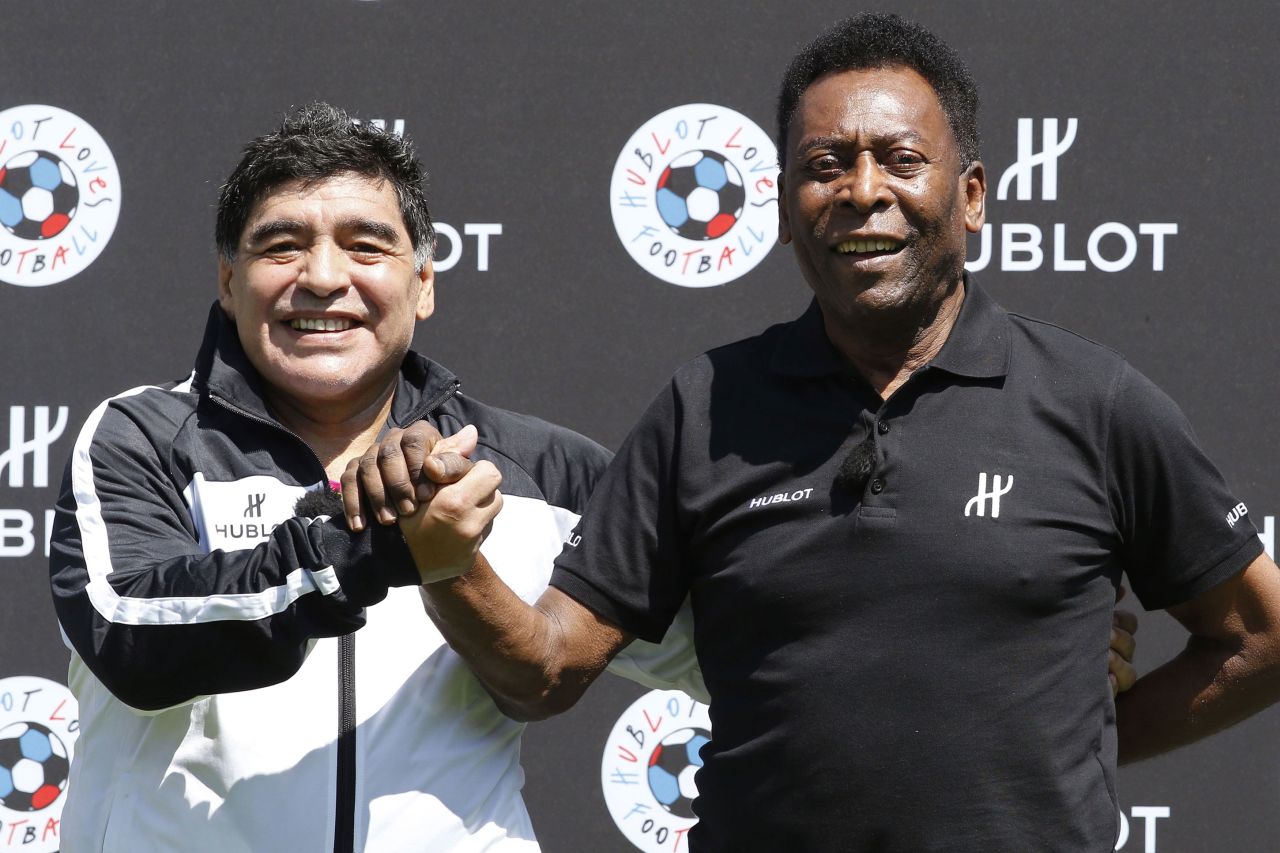




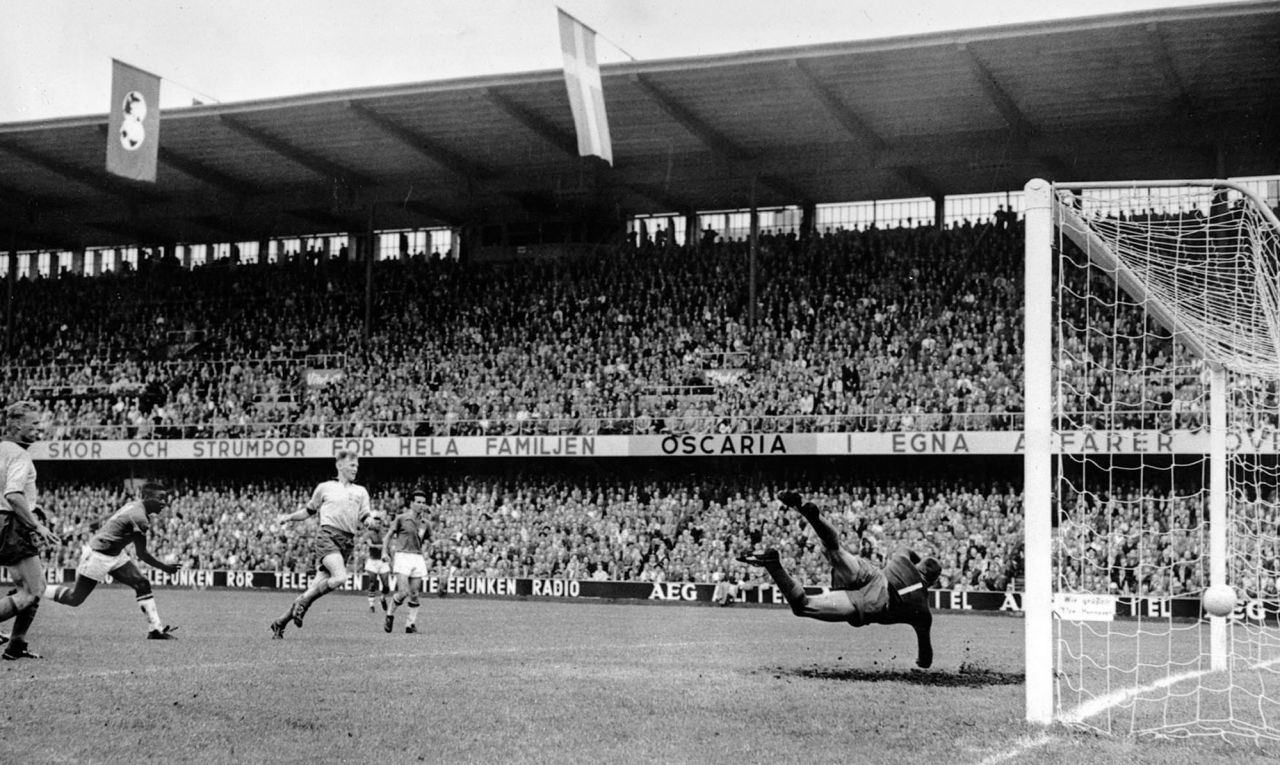





























No comments:
Post a Comment